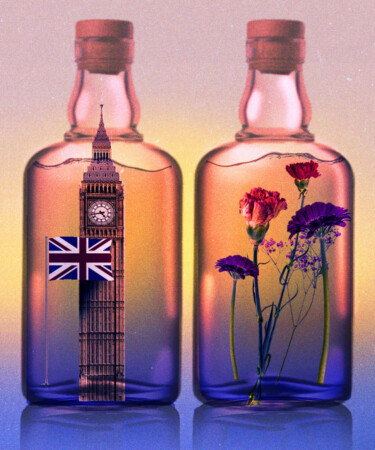Let’s be honest: When it comes to gin consumption, we’re talking about cocktails. Gin is rarely taken as a shot or ordered neat, and while this might impede it from staking a claim in the luxury spirits game, its inclusion in many classic cocktails keeps gin incredibly relevant. So when choosing which bottle to pick up to stiffen your Negroni or order in your post-work Martini there is one thing that you should always consider, and that’s the style of gin.
Two styles of gin currently dominate the market: the classic London Dry style and the more modern New American style. London Dry gin is what typically comes to mind when one thinks of the category, thanks to its crisp and juniper-forward profile. While this classification was indeed created in London in the 19th century, London Dry gin can be made anywhere in the world as long as the producer adheres to the category’s requirements — that the gin be made with no artificial additives, and that a maximum of 0.1 grams of sweetening agent is incorporated after distillation.
Compared to this clean and consistent category of gin, the “New American” style, which has no strict definition, is a more free-spirited, botanical-forward style. These contemporary bottles can also be made around the world, but the characteristic that groups them together is their use of bolder, and maybe more obscure, botanicals. In these gins, juniper takes a back seat to aromatic notes like cardamom, lavender, star anise, sage, and lemongrass.
Those major differences are why it’s important to keep these categories in mind when building your ideal gin cocktail. We find that the London Dry style lends itself better to the more classic gin cocktails like the Martini, the Vesper, the Gin & Tonic, and the Negroni. These cocktails benefit from the style’s crispness, whereas the more floral aromatics from the more contemporary styles might distract from those more spirit-forward flavor compositions. That said, New American gins can bode well in the more fruity and floral modern classic cocktails like the Last Word, the Clover Club, or a simple fruit-forward highball. In these cocktails, the more intense botanicals will add to the cocktail’s overall flavor profile instead of retracting from it.
Of course, there is always the opportunity to dig a little deeper and try to match the exact botanicals of a specific gin to whichever libation you’re making or ordering. To optimize the spirit’s contribution to the cocktail, head to the distillery’s website and check out their botanical blend, as this can help determine how to best use it. Even if you are designing new or obscure cocktails where there is no precedent, just make sure you keep the style of the gin you choose top of mind, as it can radically change your drinking experience.
